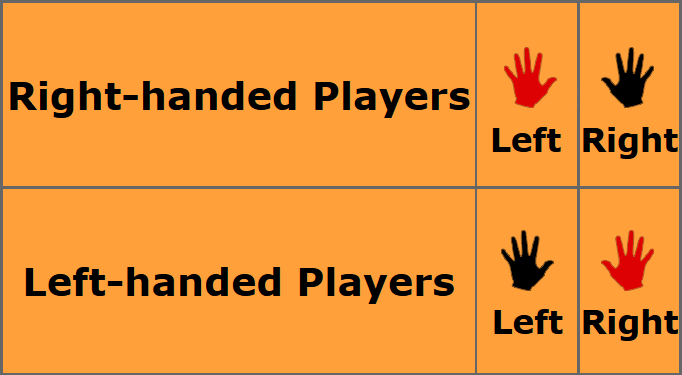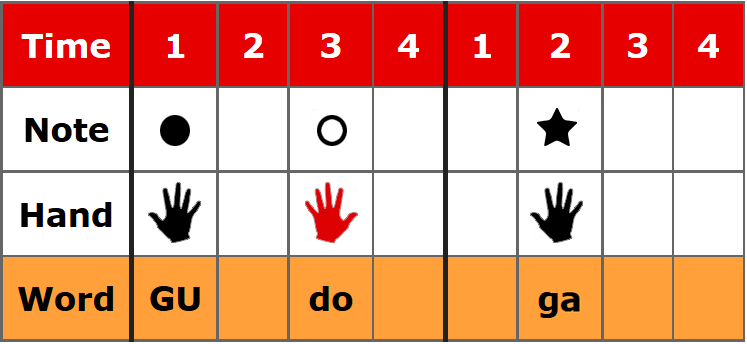
Introduction
Djembe notation is a way of writing down rhythms on a page.
With the ease of sound and video recording today, it's often quicker to listen or watch and repeat than to learn music notation. However, understanding how rhythms are written down gives musicians a much better grasp of the song itself and music in general too.
The drum notation we use is much easier all those squiggly dots and dashes of regular music score. It'll only take you a few minutes to get basic understanding and you'll be on your way.
Drum Notation
Rhythms are written down on a chart with four rows. The chart is read from left to right while reading the information given in each row.

Top Row - a lineal representation of the passage of time. It divides the song's structure into equal time measures and shows you the available spaces where notes can be played.
Second row - shows the notes to be played, with different notes represented by different symbols. The notes appear underneath the time at which they are to be played.
Third row - tells you which hand to use
Fourth row - shows a phonetic (verbal) representation of the note, a technique which is often used in djembe drumming.

You use the notation by:
1. Reading the numbers in the top row from left to right, either aloud or in your head.
2. Playing the notes shown in the second row underneath. Where there is a blank space, don't play, just count without playing a note.
3. You use the hand indicated in the third row.
4. You can also verbalise the notes or rhythm using the words in the fourth row.
The Time
The time (top row) is usually divided into counts of four.

It can also be divided into counts of three.

The whole numbers can also be sub-divided half beats. (the + sign is pronounced 'and')

This is read as 'One and two and three and four and'.
There are other variations but this will do for now.
The Notes
The three basic notes of the djembe, the bass the tone and the slap are shown as symbols.
We'll explain in detail later what each symbol means and how to play them, but here's a reference for future use.

The hand
Instead of using just 'left' and 'right' (or L and R) to show which hand to use when playing a particular note, we use a picture of a hand, either red or black.
This is because left handed people play rhythms using the opposite hands to right handed people, so where a right-handed person would use their right hand for a note, the left-handed person would feel more natural using their left.
Right-handed people - black hand means use your right hand, red hand means use your left hand.
Left-handed people - black hand means use your left hand, red hand means use your right hand.
Make sense?

The Words
Traditionally rhythms are taught not using notation, but verbally by singing the rhythm out loud and copying it on the drum.
We use these words so you too can learn how to speak the language of djembe rhythms.
Each note has a corresponding word, which also indicates which hand to use and so hearing the language spoken in the rhythm of the song tells you everything you need to know. Ingenious!
Here are the words used for the basic notes, depending on the hand used.

Pronounciation
GU - Sounds like 'goo' but with a shorter 'oo' sound.
DU - Sounds like 'do' but with a shorter 'oo' sound.
go - Sounds like the beginning of 'gore'
do - Sounds like the beginning of 'door'
ga - Sounds like the beginning of 'guppy'
ta - Sounds like the beginning of 'tug'
That's it! Here's another look at the whole chart put together.

Don't worry if you don't completely understand it all yet. It will become clearer when you see it in practice.
Move on to...







How do you perform the slap, bass and tone?
Check out lesson 3 for bass, lesson 4 for tone and lesson 5 for slap.